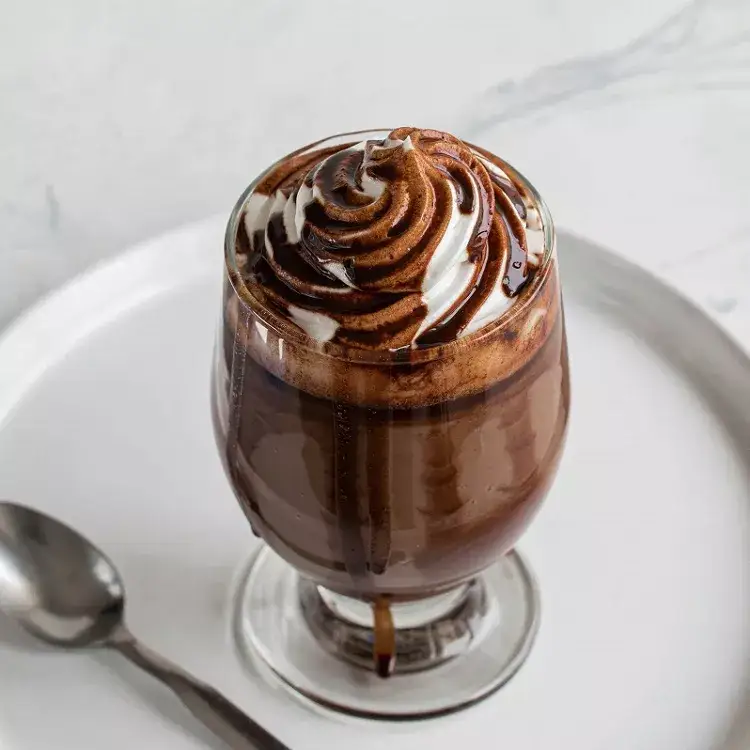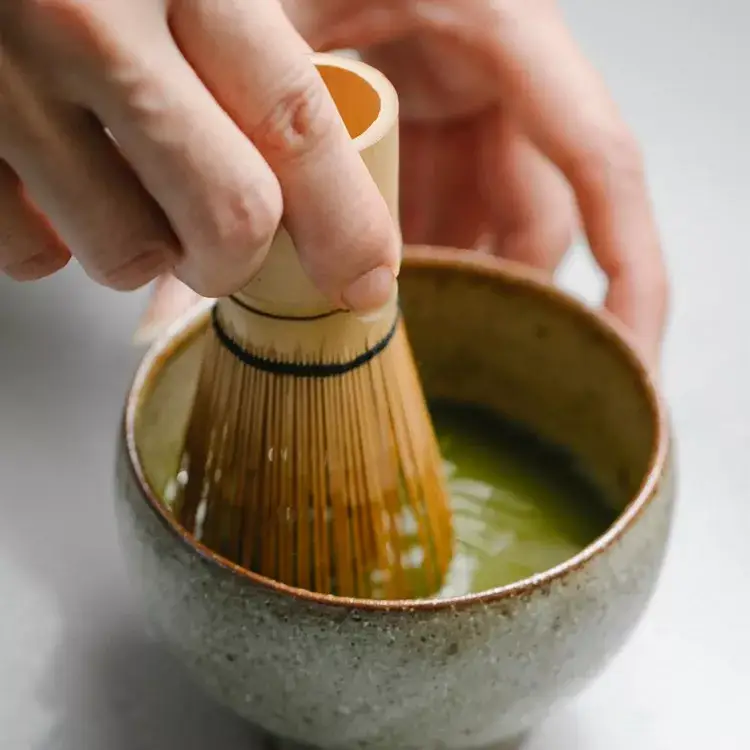Capping: taste like a barista
You look at the cup. It looks like just coffee, but it has dozens of flavors, aromas, and stories. Hidden in the beans, they don’t open right away, and to hear them, you need more than just drink. You have to feel them. To find the sourness that you hadn’t noticed before. Distinguish between cranberry or dark chocolate notes.
It’s not magic – it’s a professional sensory assessment of coffee. And it can be learned.
The practice, which turns intuition into a skill, allows for a deeper understanding of aroma, taste, texture, and balance. The term comes from the English cup, because cups are used to taste a drink without filtering, preserving the maximum flavor. The method emerged in the XIX century as a way to objectively assess the quality of the grain, and over time, it has become the foundation of modern standards in the world of speshelti – professional coffee tasting.
During capping, the grain is ground, poured with hot water, allowed to brew for several minutes and tasted with a spoon without additives to avoid spoiling the taste. Everything from grinding to water temperature is strictly regulated by international protocols, which ensures repeatability and fairness of results across countries.
It’s not just a technique – it’s a language in which coffee tells its story: about terroir, processing, freshness, and the journey from plantation to cup.
Why capping is carried out
For farmers, traders, roasters, baristas, and anyone else who works with coffee professionally, sensory analysis is an important tool: it allows you to identify defects, assess the potential of a batch, choose the right roast profile, or create a balanced blend.
Capping helps to assess the quality of the beans, identify defects, and understand its aromatic profile, flavor profile, and aftertaste. Roasters use tastings to test new batches of green beans and select the best ones. It allows them to customize the roasting profile to maximize the natural properties of the beans. Coffee companies use sensory analysis to shape their assortment, create blends, and ensure flavor stability. Baristas, on the other hand, are able to better understand the drink they are working with and convey its characteristics to guests. Thanks to a standardized methodology, cupping allows for an objective comparison of samples, even if they come from different regions of the world. It is not only a professional practice, but also a form of dialog between coffee and people who want to discover its character.

Capturing process
The art of deeply analyzing the sensory characteristics of coffee allows us to find the perfect beans for further roasting and preparation.
The process begins with sample preparation: each variety is roasted and ground separately using a medium grind. According to the SCA protocol, 8.25 g of grind per 150 ml of water at 93°C is taken for each sample. The grind is poured into cups, the dry aroma is inhaled, and then the hot water is poured over it. After 4 minutes, the “crust” is broken with a spoon. It is at this point that the moist aroma is revealed. After that, the foam is removed from the surface with a spoon. Time is given for cooling.
Only at this stage does the tasting begin.
Aroma, flavor, acidity, texture, aftertaste and overall impression are evaluated according to the SCA (Specialty Coffee Association) scale.
Participants in the taste assessment
The process is open to anyone who wants to develop themselves and gain a better understanding of grains. Experience is not a prerequisite, as over time, through regular practice, even beginners learn to distinguish between aromatic notes, acidity, texture, balance and aftertaste.
Coffee shops, events, and festivals are becoming an entry point for coffee drinkers who want to taste consciously and compare different varieties.
In the professional community, Q Graders play a key role – certified specialists who evaluate green grain according to SCA protocols. They have in-depth sensory skills and are able to identify both positive and defective characteristics, which is important for making decisions on the purchase, sorting or export of grain batches.
However, even without professional training, you can gradually train your receptors, develop sensory sensitivity, and discover the multilayered world of coffee bean flavor through practice. This is the path to a deep understanding of the drink, which begins with simple curiosity.
Is it possible to become the best caper in the world
Every year, the Specialty Coffee Association holds the World Cup Tasters Championship, a prestigious international competition that determines the most accurate and fastest taster in the world. Participants are offered a “triad” of cups: three samples, two of which are identical and one of which tastes different. The task is to identify the distinctive sample as quickly and accurately as possible, working under limited time and without any prompts. This process requires not just intuition, but a systematic approach, a trained sense of smell, and a high level of sensory analysis.
To reach the international level, a candidate has to go through difficult national selections. However, years of practice are behind the competition: daily testing of different coffee samples, keeping detailed tasting notes and comparing them with each other. Successful captains often train alongside certified Q Graders, professionals with in-depth knowledge of flavor profiles. It is important not only to have a natural sense of smell, but also a well-developed memory for flavors, as well as analytical thinking to accurately recognize even the most subtle flavors.
Becoming the world’s best caper is quite possible. It’s not just a matter of talent, but the result of dedication, self-discipline, experience, and constant work on oneself, which allows you to go beyond the perception of the tastes and flavors of an average person.

Standardization of capture
For coffee professionals, this standardized tool for assessing grain quality allows them to work with coffee at a high level of transparency and expertise. To obtain objective results that can be compared with those of other companies, countries, and markets, the industry follows international protocols, including the SCA scoring tables. These tables contain clearly defined criteria: aroma, flavor, acidity, body, aftertaste, balance, cup cleanliness, uniformity, overall impression, and defects. Each parameter is rated on a scale from 6 to 10 points. A total score above 80 indicates that the sample belongs to the“specialty” category.
Consistency in preparation is key: a fixed dose of beans, precise grinding, stable water temperature and controlled infusion time. These conditions minimize the influence of external factors and allow you to focus on sensory evaluation. Thanks to a unified approach, cappers from different parts of the world can compare results, create uniform procurement standards, identify defects, make decisions on batch sorting or determine the potential of grains for export. Standardization of grading is the foundation of quality that supports the sustainable development of the industry, promotes learning, trust between producers and buyers, and a fair market.
The importance of capping for the industry
For roasters, it is a critical quality control tool. It allows them to analyze how changes in the roasting profile affect the taste of the coffee. After each test roast, the bean is tasted to assess whether its aromatic and flavor characteristics are revealed. If undesirable flavors appear in the cup – dampness, excessive bitterness – this is a signal to adjust the temperature, the duration of heat treatment or the development phase.
Cupping is also used in the selection of green grain. During purchasing sessions (in particular, at the “sample cupping” stage), companies compare several lots from different producers and choose those with the best profile.
In production, the analysis of sensory characteristics helps to determine which batches will be included in branded blends and which will be used for mono-sorting. This ensures consistent taste for the end consumer.
Thanks to capping, coffee companies can not only ensure quality but also build their own style and reputation in the market.
Bottom line.
The first sip. Warm aroma, light sourness, a note of blueberry or jasmine. It may seem like just a drink, but hours of observation have gone into it, and it has undergone dozens of tastings to become your companion for the perfect moment.
Capping is the moment of meeting coffee without any decorations, the way nature created it: no sugar, no milk. Only beans, water, and attentiveness. In this process, subtle aromatic nuances are felt, defects are detected, and the potential of each sample is revealed.
For professionals, coffee tasting is a daily practice. It’s a way to control quality, polish roasts, and find the perfect blend. Coffee companies use tastings to create a brand’s flavor identity and make decisions about the purchase of raw materials.
But the ritual of taste assessment is not just for experts. It is open to anyone who wants to better distinguish the shades of their passion. Regular tasting is a training of taste buds, sensitivity to the subtle notes of your favorite drink.
It’s not just a technique. It is a way to get to know coffee better, become more attentive, and join a global culture that values taste, transparency, and quality.






